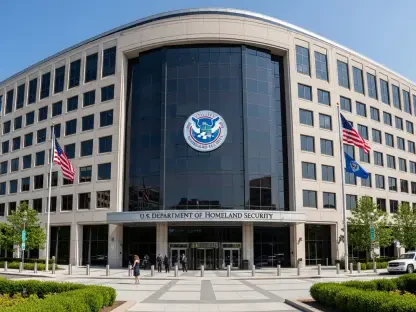U.S. colleges and universities might face a significant crisis as projections indicate a potential decline in enrollment numbers, with particularly drastic consequences if international and immigrant student figures are excluded. A recent study by the National Foundation for American Policy forecasts sizable declines in both undergraduate and graduate enrollment by 2037. This drop is anticipated to be especially acute if these institutions can no longer rely on international students to bolster their numbers. With political climate changes and stricter immigration policies on the horizon, the educational landscape in America could be on the brink of a major transformation. Encapsulating these issues is an analysis of future economic, demographic, and policy-driven challenges confronting American higher education.
Projections of Declining Enrollment
Impact of Excluding International Students
If international students were removed from the enrollment equation, devastating impacts would be felt across the American education system. The study predicts that undergraduate enrollment could diminish by one-third, while graduate enrollment could decrease by 1.1 million students. This scenario is emphasized by comments from Madeline Zavodny, an economics professor at the University of North Florida, highlighting the potentially “catastrophic” effects on many universities if this were to materialize. The Trump administration’s prior policies serve as a case study for what could occur, having already initiated measures to reduce international student numbers. These policies leaned heavily towards revoking student visas, deportations, and detentions, posing severe threats that hindered global students’ ambitions of pursuing U.S. education.
Even during the initial years of these policies, modest initial drops in international enrollments appeared negligible. However, Zavodny’s observations that the current figures are “a drop in the bucket” solidify the need for serious reconsideration if further policy restrictions are imposed. The potential for such policies to undermine overall enrollment becomes increasingly plausible and alarming given their implications of cutting federal funding and placing rigorous restrictions on international student enrollment.
Declining American Student Numbers
American student enrollments continue to decline, driven by a multitude of factors including dwindling birth rates and reduced college attendance among native students. Current projections suggest that U.S.-born college enrollments might drop by 15 percent by the decade’s end. Despite this trend causing concern, the surge in international student enrollments amidst these declines has become a noteworthy buffer. The data from the Institute of International Education indicates international enrollments reached 880,000 students recently, marking a continuation of steady growth since the early 2010s. These international students have contributed significantly to sustaining college populations, bolstering an otherwise declining native student demographic.
Immigrant students, especially second-generation individuals, make up an increasingly significant portion of student bodies. Rising from 15 to 24 percent of total enrollment, they play a crucial role in higher education’s current dynamics. This demographic stability amidst a range of adversities remains commendable. However, it’s critical to anticipate and address future challenges that could result in these groups’ decreased participation if restrictive policies persist, highlighting the growing complexities of demographic trends that could reshape American education fundamentally.
The Economic Repercussions
The Vital Economic Role of International Students
International students contribute substantially to the U.S. economy through tuition fees, living expenses, and contributions to the workforce. They provide financial sustenance that colleges and universities increasingly rely on due to domestic enrollment declines. In the most recent academic year, international students brought $43.8 billion into the economy, supporting over 378,000 jobs according to the Association of International Educators. Moreover, the Optional Practical Training (OPT) programs, facilitating post-graduate work opportunities, have been pivotal in attracting these students.
These economic contributions have reinforced the standing of many educational institutions during periods of financial uncertainty. However, initiatives proposed under previous administrations to restrict or dismantle OPT could significantly impede international enrollments. Without such programs aiding their transition into the workforce, students may seek education elsewhere, where post-educational career opportunities appear more attainable.
Policies and Their Possible Effects
Stricter immigration policies, such as attempts to end birthright citizenship and secure U.S. borders more firmly, pose added complications to the educational domain. Such measures threaten the current equilibrium that immigrant contributions to colleges create. Zavodny argues that policy implementations of this nature might deter prospective international students due to concerns about deportation risks and inability to complete their degrees. The fear of potential deportation, incarceration, or the inability to thrive post-graduation might dissuade both current and potential students from seeking education in the U.S., substantially affecting demographic strategies.
U.S. colleges need to be cautious about policy decisions that may act as deterrents. The ripple effect of diminishing international student enrollment not only affects student body diversity but could also exacerbate financial vulnerabilities within institutions dependent on these student demographics. In evaluating current and future policy impacts, careful consideration must ensure educational viability and global appeal aren’t compromised.
Strategic Adaptations for Enrollment Stability
Navigating Projected Changes
If declining trends materialize without intervention, undergraduate enrollments are projected to decrease further with diminishing international student numbers. The absence of new immigrant inflow might exacerbate the situation, leading to additional drains on enrollment statistics. Speculative assessments suggest undergraduate enrollments could see a further 6.6 percent drop while graduate enrollments face a potential 12 percent reduction. Individual impacts vary, but collectively these declines raise significant concerns.
Challenges remain considerable, with the forecast indicating a potential 23 percent decrease in undergraduate enrollments and a 16 percent decrease in graduate enrollments by 2037 without the immigrant student population to bolster numbers. It’s apparent that decision-makers need to be immensely strategic in navigating projected changes, implementing adaptive measures in policies to sustain institutional relevance and financial health.
Adapting College Strategies
Colleges and universities must reconsider their enrollment strategies and expand their outreach to a broader pool of potential students. Initiatives could include targeting non-traditional students or investing in global recruitment partnerships, ensuring diversity, equity, and inclusion agendas lift rather than deter international interest. Flexibility in admissions and tailored academic offerings could foster environments conducive to broader participation, counterbalancing possible enrollment declines.
Reworking curricula, enhancing global engagement, and increasing the appeal of U.S. education could fortify against anticipated deficits. By offering supportive pathways and ensuring attractive integration opportunities, institutions could alleviate financial vulnerabilities. Without such interventions, universities could face profound challenges undermining their sustainability and global competitiveness, urging strategic reconsiderations for enrollment stability.
Anticipating the Future of Higher Education
If international students were excluded from U.S. enrollments, it would have a severe impact on the American education system. Predictions indicate undergraduate enrollment might shrink by a third, while graduate numbers could fall by 1.1 million. Madeline Zavodny, an economics professor at the University of North Florida, underscores the potentially “catastrophic” outcome for universities if this scenario unfolds. The policies from the Trump administration offer a cautionary example, as they took steps to curb international student numbers. These measures included revoking student visas, deportations, and detentions, thus posing significant threats to overseas students aspiring to study in the U.S.
Initially, the drop in international enrollment seemed minor, but Zavodny notes this is just “a drop in the bucket,” suggesting a need for reevaluation if stricter policies are contemplated. The potential consequences of such policies are increasingly concerning, as they could severely reduce overall enrollment, affecting federal funding and imposing strict limits on international student admissions.









